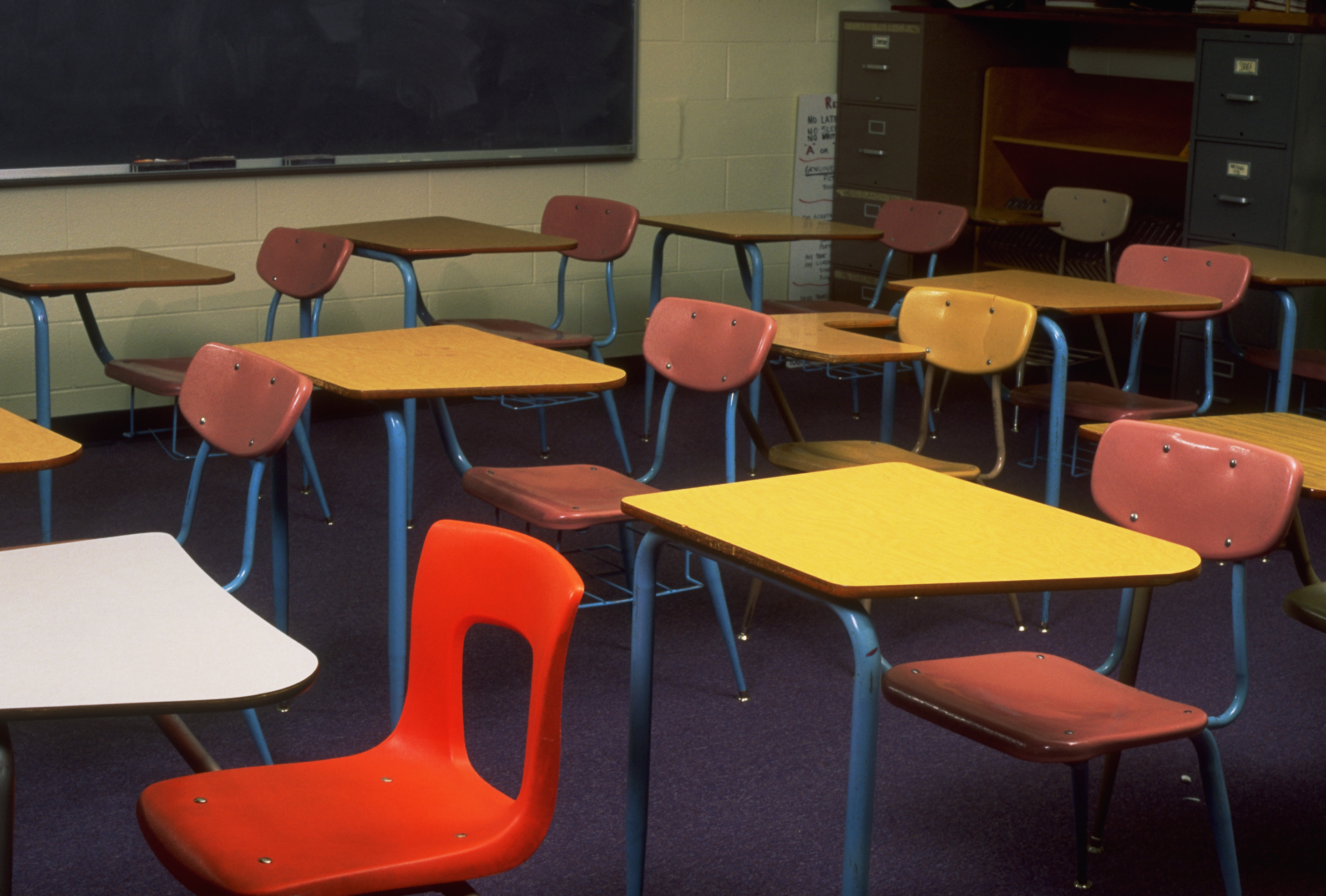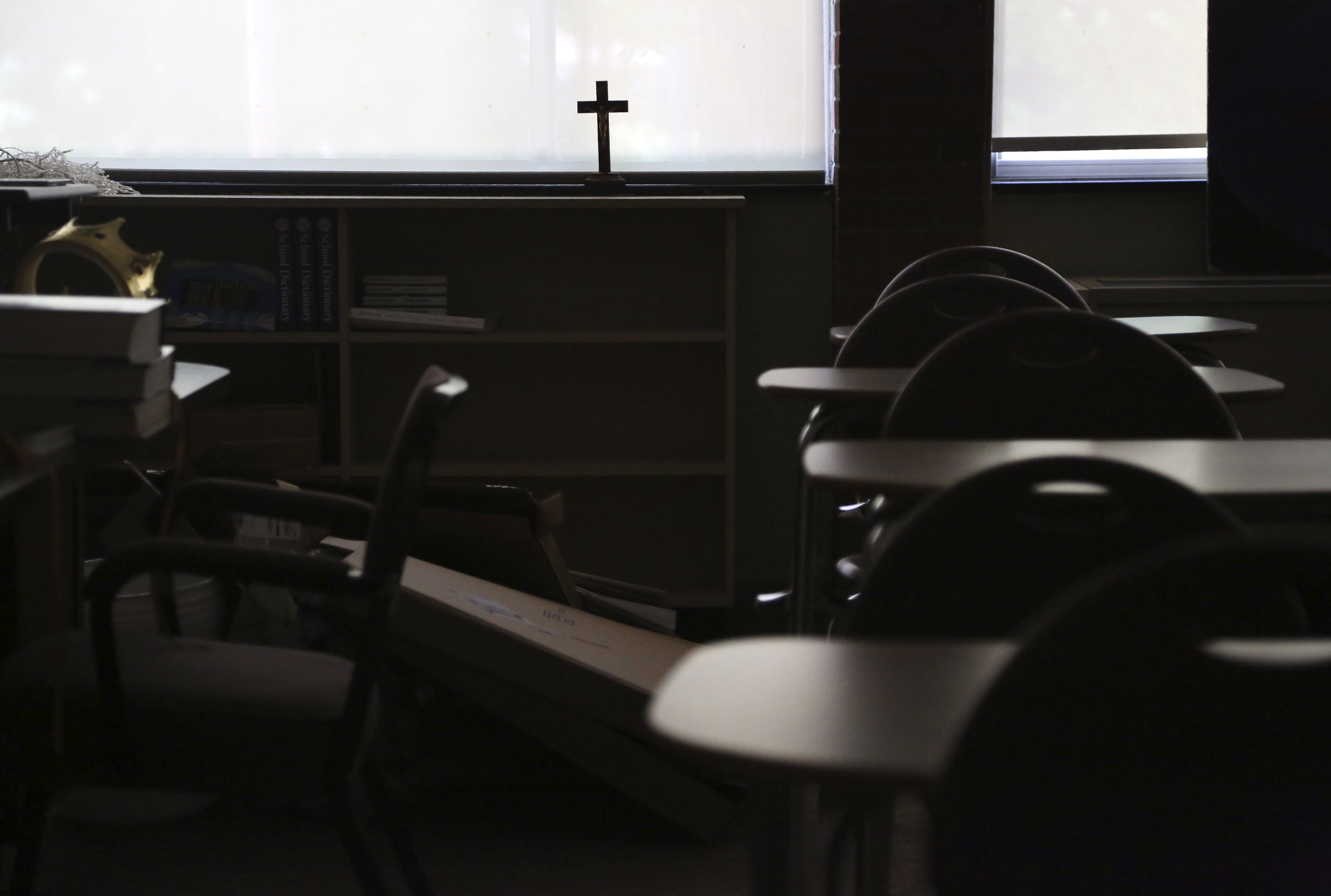What to Know
- 74% of NYC students will attend school part-time in a blended format this fall, and 85% of teachers will teach in-school, the city says
- The remaining students and teachers have opted for an all-virtual model for the fall instead
- Scheduling information will start going out the week of Aug. 17
Mayor Bill de Blasio struck a confident note about the reopening of schools on Monday, saying the city was better prepared for the challenge than most -- even as more than a quarter of students opt for all-remote learning.
"If you look at what's happening in other places, it probably causes you a certain amount of concern, a certain amount of doubt," the mayor said at his Monday news conference. "But we're not those other places.
"We're the only major school district in America, the only major urban district, planning for in-person classes this fall," he said.
Get Tri-state area news and weather forecasts to your inbox. Sign up for NBC New York newsletters.
De Blasio said 74 percent of students were planning to attend school in person, per the results of a city survey, and 85 percent of teachers intend to physically teach in schools. That would mean up to 700,000 children would be in schools a few days each week.
The remaining 26 percent of students and 15 percent of teachers opted for an all-remote model, De Blasio and schools chancellor Richard Carranza said. School districts have until Aug. 21 to post their plans for remote learning, testing and tracing on the websites.
“You’re not going to dictate to parents that they have to send their children” to school, the governor said.
And Cuomo warned school officials in New York City and statewide that they have just three weeks to provide three to five public sessions with teachers and parents on reopening plans.
“They have to start and they have to start soon, because you don’t want to rush these conversations, you don’t want to create more anxiety for the parents and for the teachers,” Cuomo said.
United Federation of Teachers President Michael Mulgrew said in a statement that the survey "is one step in the process of figuring out if schools reopen — how to do it safely. We have a long way to go. Many questions about safety and about blended learning are still unanswered."
However, the education department later clarified that most families didn't even fill out the survey at all, which leaves a great deal of uncertainty with just four weeks to go.
City Councilman Mark Treyger, chairman of the education committee and a former teacher, didn't sound optimistic in schools' ability to reopen safely.
"I don't believe schools are ready and I've been very clear on that," Treyger said. "Schools do not have enough money, time or space to operationalize safety plans."
Scheduling announcements will start next week, the mayor said. But all of that remains contingent on the state approving the city's plan -- and Gov. Andrew Cuomo said Monday the plan was still under review.
He also said 107 school districts statewide — about one in seven in New York — have still not submitted their plans for reopening, and if they don't submit plans this week they won't be able to reopen for in-person learning, which is scheduled to start a month from Monday.
"How you didn't submit a plan is beyond me,: Cuomo said in a Monday conference call with reporters.
Below is the list of school districts that had not submitted a plan as of Aug. 10:
Franklinville
Portville
Salamanca
West Valley
Broadalbin-Perth
Mayfield
Kendall
Argyle
Fort Ann
Hendrick Hudson
Bedford
Garrison
Carle Place
Elmont
Garden City
Lawrence
Locust Valley
Malverne
Manhasset
Mineola
New Hyde Park
Plainedge
Plainview
Syosset
Uniondale
Middletown
Valley-Montgmry
Camden
Oriskany
Utica
Waterville
Lake Pleasant
C-V At Ilion-Mohawk Csd
Van Hornsville
Carthage
Lyme
Newark Valley
Spencer Van Etten
George Jr Republic
Brentwood
Brookhaven-Comsewogue Ufsd
Deer Park
Longwood
Middle Country
Mount Sinai
North Babylon
Oysterponds
Remsenburg
Rocky Point
Sachem
Tuckahoe Common
Wainscott
Western Suffolk Boces
Arkport
Bradford
Corning
Hammondsport
Cooperstown
Richfield Springs Csd
Worcester
Odessa Montour
Peru
Johnsburg
Webster
Nyack
Sloan
Williamsville
Catskill
Windham Ashland
Edinburg Common Sd
Shenendehowa
Sagaponack
Cortland
Andes
Margaretville
Beacon
Poughkeepsie
Elmira
Victor
East Bloomfield
Geneva
Lewiston Porter
Pine Valley
Altmar-Parish
Oswego
Fayettvlle-Manlius
Berkshire
Germantown
Kinderhook
Brunswick Central
East Greenbush
Troy
Seneca Falls
Eldred
Jeff Youngsville
Canton
Hammond
Heuvelton
Lisbon
Massena
Potsdam
Palmyra-Macedon
Red Creek
Wyoming
Amsterdam
Canajoharie
Fort Plain
Initially there was a July 31 deadline for schools to submit their plans, and the education department said there were 86 school districts, including New York City, requested one-week extensions to submit plans by Aug. 7. Long Island was the most-presented area on the list, with a whopping 28 school districts as not having submitted a plan.
Some school districts object to being on the list. For example, the superintendents of Mineola and Nyack school districts said that they submitted their plans to the state's education department, with Mineola having posted their plans on their website July 31.
Similarly, a spokeswoman for the Locust Valley Central School District said they too had submitted plans to the state.
"This has been frustrating for superintendents and their colleagues," New York State Council of School Superintendents Spokesman Robert Lowry said. "And many of them feel that they’ve submitted those plans as required."
However, a senior adviser to the governor said that the list is accurate, but that some districts didn't file their plans with the Department of Health, which the adviser said they were instructed to do. Other districts simply just affirmed that their would abide by the state's reopening guidance but didn't submit an actual plan, and are doing so now, the adviser said.
Rural and suburban towns and the nation’s largest school district are all facing pressing deadlines to ensure schools have enough testing, contact tracing, high-speed internet, bus drivers, protective gear and space to maintain social distancing and mask-wearing requirements.
The dilemma over whether to go to school or not is compounded in part by the heat and the state of some schools' HVAC systems, which has some places contemplating the prospect of outdoor schooling.
"In good weather, outdoors is definitely something that can add different options for schools," De Blasio said.
It has been seven years since the central air conditioning system worked at the New York City middle school where Lisa Fitzgerald O’Connor teaches. As a new school year approaches amid the coronavirus pandemic, she and her colleagues are threatening not to return unless it's repaired.
Her classroom has a window air conditioning unit, but she fears the stagnant air will increase the chances that an infected student could spread the virus.
“Window units just aren’t going to cut it. We don’t want to stay cool, we just want the air to flow properly,” said O’Connor, a science teacher who has worked at the Patria Mirabal School in Manhattan since 2009. “We are really super stressed out about it.”
Schools around the country are facing similar problems as they plan or contemplate reopening this fall, dealing with aging air conditioning, heating and circulation systems that don’t work well or at all because maintenance and replacement were deferred due to tight budgets. Concerns about school infrastructure are adding momentum to plans in some districts, even in colder climates, to take classes outdoors for the sake of student and teacher health.
Nationwide, an estimated 41% of school districts need to update or replace their heating, ventilation and cooling systems in at least half their schools, according to a federal report issued in June.
"We need to show the publicly constantly that progress in those numbers and we will do that," De Blasio said of New York City's schools.
There is no evidence that the disease can spread through ventilation systems from one classroom to the next, according to Dr. Edward Nardell, a Harvard Medical School professor who specializes in airborne diseases. The danger, Nardell said, is from ineffective systems that don’t remove floating viruses and let them linger in classrooms after they are expelled in an infected person’s breath, sneeze or cough.
“Most schools are designed for comfort, not for infection control. So there is a danger that if you put 20 kids in a room, that if one of them has asymptomatic COVID and is infectious, you now have 19 more kids who are exposed,” Nardell said. Healthy children almost always recover from COVID, if they become ill at all, but they can pass the disease to teachers, parents and other adults.
Nardell believes schools should consider installing ultraviolet lights along classroom ceilings, a technology some used in the 1950s and earlier to combat measles, tuberculosis and other airborne diseases and that is still used in hospitals and homeless shelters. Viruses and bacteria are destroyed using a spectrum of UV light that is safe for humans. Manufacturers say the devices would cost $3,000 per classroom.
Some, including Education Secretary Betsy DeVos, say one solution to air circulation problems may be teaching classes outdoors, which was done during tuberculosis and influenza outbreaks in the early 1900s, even in cold weather. The coronavirus spreads less efficiently outdoors and students could more easily sit 6 feet apart.
Having classes outdoors has other benefits, said Sharon Danks, CEO of Green Schoolyards America, a Berkeley, California, nonprofit that advocates for outdoor education. Children actually are less distracted and feel better emotionally when taught outdoors, she said.
“Nature has been shown to restore the ability to pay attention,” she said.
Several schools in the Northeast have bought large event tents like those used at outdoor weddings and plan to use them to teach outside through November.
The White River Valley Middle School in Bethel, Vermont, spent $50,000 on tents and another $20,000 on port-a-potties, hand-washing stations and other equipment. While some schools have equipped tents with propane heaters, White River Valley Principal Owen Bradley said his students can handle the expected November daytime temperatures in the 30s without them.
Bradley said one upside will be an opportunity to help students better understand and appreciate nature.
“We hope they value it forever and help us save the planet,” he said.
Janet Robinson, the superintendent in Stratford, Connecticut, said some of her district’s 13 schools were built between 80 and 100 years ago and aren't capable of handling modern air systems — “they are a challenge.” There are also crowding issues — one has classrooms built for 15 students but that typically have 25, making social distancing impossible.
“It is kind of naive for politicians and whoever to say, ‘Just bring (the students) in and keep them at 6 feet distance,‘” she said.
Brian Toth, superintendent of the Saint Marys Area School District in northern Pennsylvania, said his district’s five schools’ air systems have no exit vents to circulate fresh air in and the virus out. He estimates it would cost at least $600,000 per school to replace the systems. When his schools reopen Aug. 31, students will be asked to wear masks, but Pennsylvania law exempts children whose parents claim they have a physical or mental condition.
“You look at the way schools were built, nobody expected to have a classroom with a 6-foot radius around a student,” Toth said. Instead, classrooms “pack them in like sardines and now we are facing the consequences.”



